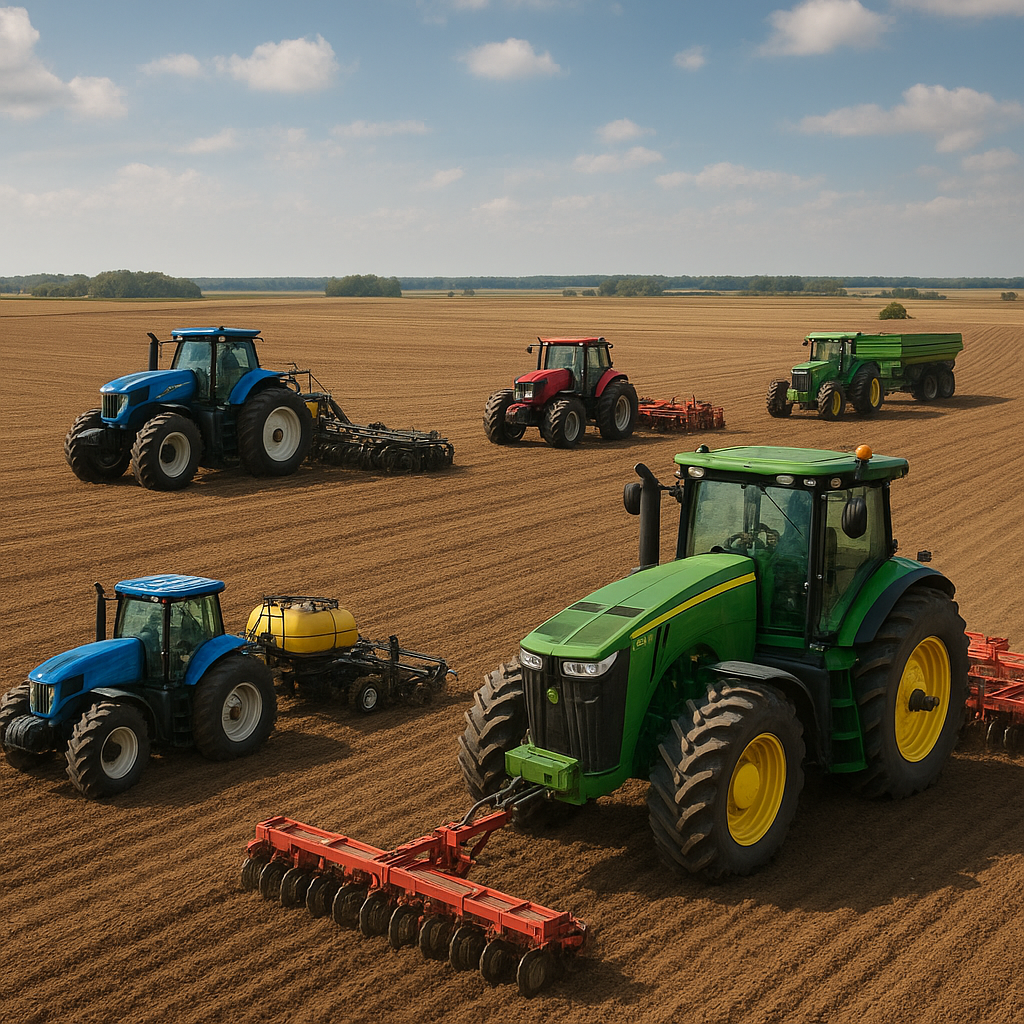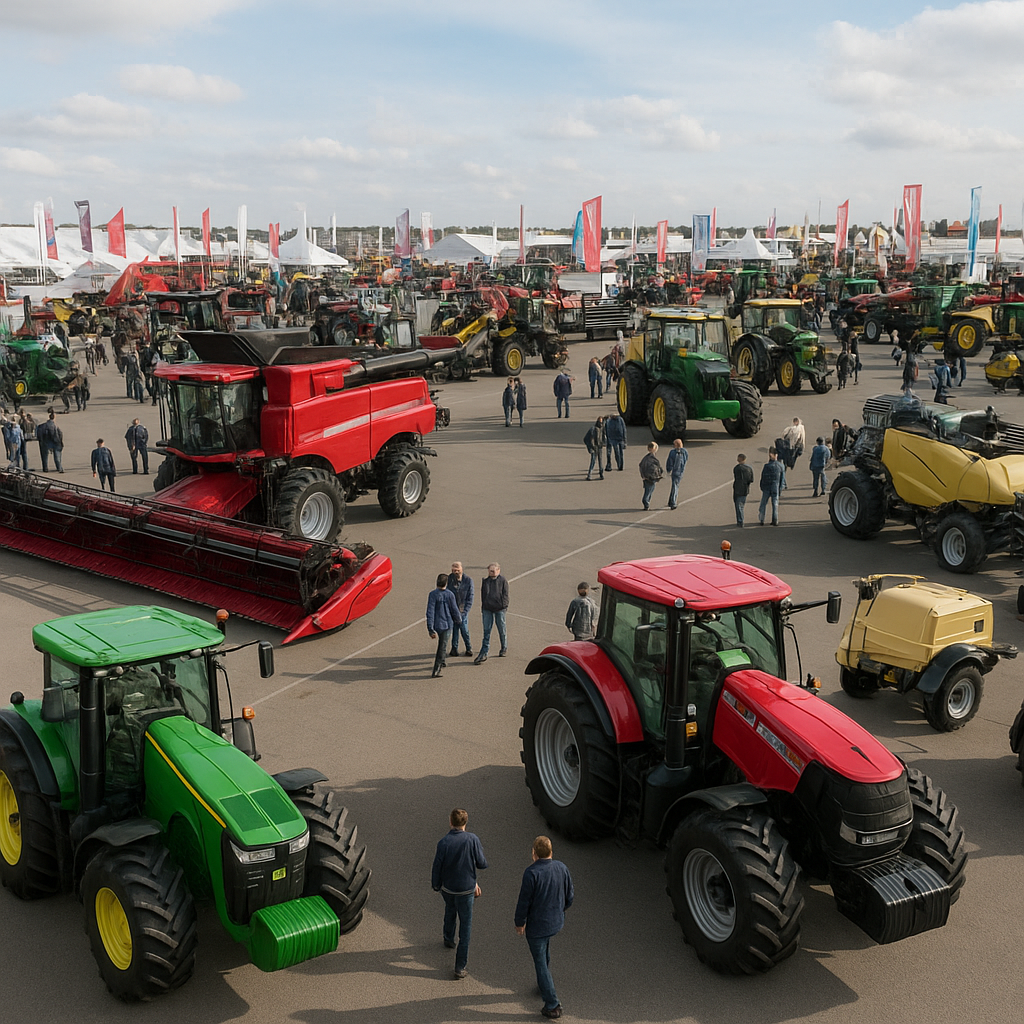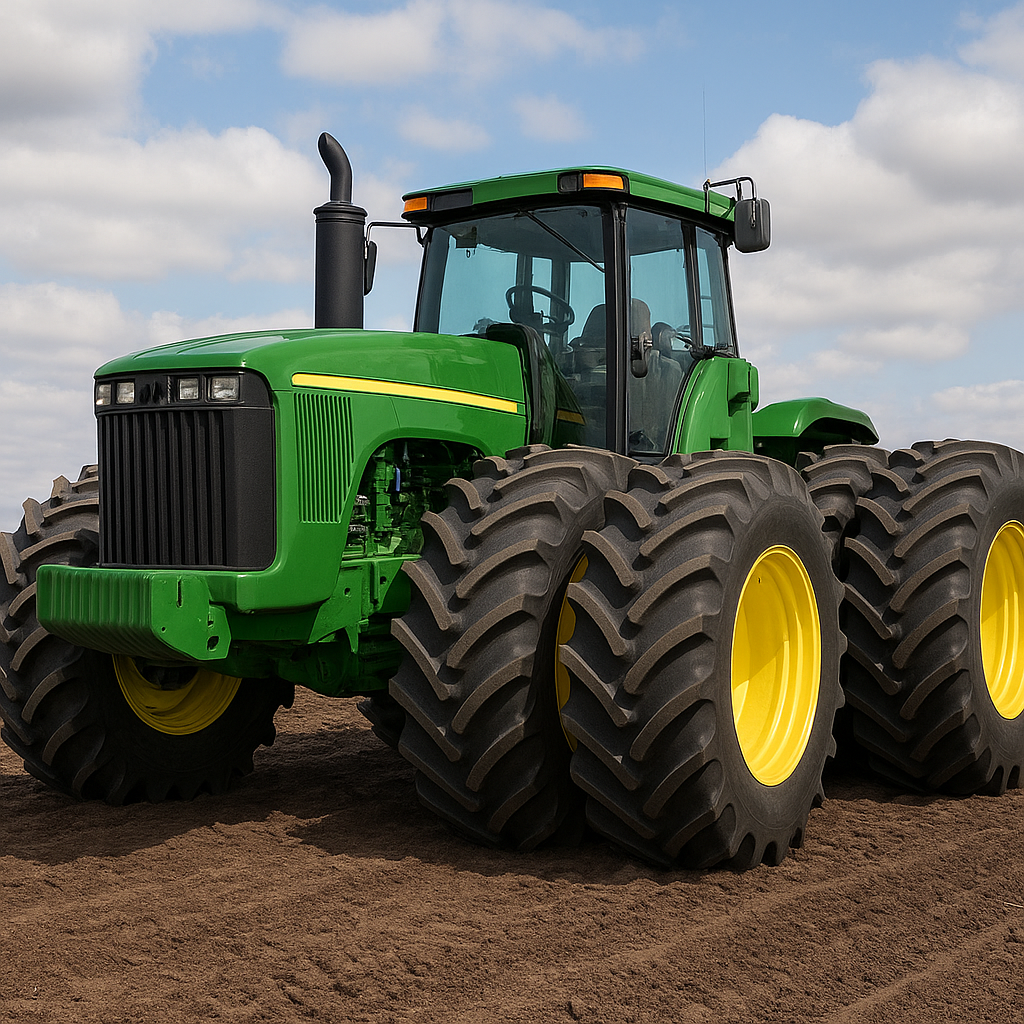The Evolution of Tractor Safety Features: From Roll Bars to Collision Detection
Tractors have been an essential part of agriculture for over a century, revolutionizing the way farming is done. However, with the increased use of these powerful machines, the need for enhanced safety features has become paramount. This article delves into the evolution of tractor safety features, from the early days of roll bars to the modern advancements in collision detection systems.
The Early Days: Roll Bars and Seat Belts
In the early days of tractor use, safety was not a primary concern. Tractors were simple machines, and the focus was on functionality and efficiency rather than operator safety. However, as the number of tractor-related accidents began to rise, the need for safety features became evident.
Roll Bars
One of the first significant safety features introduced was the roll bar, also known as the Rollover Protective Structure (ROPS). Roll bars were designed to protect the operator in the event of a rollover, which was a common cause of fatal accidents. The roll bar creates a protective zone around the operator, preventing them from being crushed under the weight of the tractor.
The introduction of roll bars in the 1960s marked a significant milestone in tractor safety. Studies have shown that the use of ROPS can reduce the risk of fatal injuries by up to 99% when used in conjunction with seat belts. Despite their effectiveness, it took several decades for roll bars to become a standard feature on all new tractors.
Seat Belts
Alongside roll bars, seat belts were another crucial safety feature introduced to tractors. Seat belts help keep the operator within the protective zone created by the roll bar during a rollover. Without a seat belt, the operator could be thrown from the tractor, increasing the risk of serious injury or death.
Initially, seat belts were not widely adopted, as many operators found them uncomfortable or restrictive. However, as awareness of their life-saving potential grew, seat belts became a standard feature on most tractors. Today, the combination of roll bars and seat belts is considered the most effective way to protect operators in the event of a rollover.
Modern Advancements: Collision Detection and Autonomous Systems
As technology has advanced, so too have the safety features available on modern tractors. Today’s tractors are equipped with a range of sophisticated systems designed to prevent accidents and protect operators. Two of the most significant advancements in recent years are collision detection systems and autonomous operation.
Collision Detection Systems
Collision detection systems use sensors and cameras to monitor the tractor’s surroundings and detect potential obstacles. These systems can alert the operator to the presence of obstacles, such as other vehicles, people, or animals, and can even take corrective action to avoid a collision.
One of the key components of collision detection systems is the use of radar and LiDAR technology. These sensors provide real-time data on the tractor’s environment, allowing the system to identify potential hazards and respond accordingly. In some cases, the system can automatically apply the brakes or steer the tractor to avoid a collision.
Collision detection systems have been shown to significantly reduce the risk of accidents, particularly in busy or complex environments. By providing operators with real-time information and assistance, these systems help to prevent accidents and improve overall safety.
Autonomous Operation
Another major advancement in tractor safety is the development of autonomous operation. Autonomous tractors are equipped with advanced GPS and sensor technology, allowing them to operate without direct human intervention. These tractors can perform a range of tasks, from plowing and planting to harvesting, with minimal input from the operator.
Autonomous operation offers several safety benefits. By removing the operator from the tractor, the risk of injury in the event of an accident is eliminated. Additionally, autonomous tractors can operate with a high degree of precision, reducing the likelihood of accidents caused by human error.
While fully autonomous tractors are still in the early stages of development, several manufacturers have already introduced semi-autonomous systems. These systems allow the operator to oversee the tractor’s operation from a remote location, providing an additional layer of safety and control.
The Future of Tractor Safety
The evolution of tractor safety features has come a long way since the introduction of roll bars and seat belts. Today, modern tractors are equipped with a range of advanced systems designed to protect operators and prevent accidents. As technology continues to advance, the future of tractor safety looks promising.
Integration of Artificial Intelligence
One of the most exciting developments in tractor safety is the integration of artificial intelligence (AI). AI has the potential to revolutionize the way tractors operate, providing real-time data analysis and decision-making capabilities. By leveraging AI, tractors can become even more autonomous and capable of responding to complex situations with greater accuracy and efficiency.
For example, AI can be used to analyze data from sensors and cameras, identifying potential hazards and making decisions on how to avoid them. This could include adjusting the tractor’s speed, steering, or even stopping the tractor altogether. By incorporating AI into tractor safety systems, manufacturers can create machines that are not only safer but also more efficient and productive.
Enhanced Connectivity
Another area of development is enhanced connectivity. Modern tractors are increasingly being equipped with advanced communication systems, allowing them to connect with other machines, operators, and even central control systems. This connectivity can be used to improve safety in several ways.
For example, connected tractors can share real-time data on their location, speed, and status, allowing operators to monitor their operation remotely. This can help to identify potential issues before they become serious problems, reducing the risk of accidents. Additionally, connected tractors can communicate with other machines in the field, coordinating their movements to avoid collisions and improve overall efficiency.
Improved Ergonomics and Operator Comfort
While technology plays a significant role in improving tractor safety, the importance of ergonomics and operator comfort should not be overlooked. Modern tractors are designed with the operator’s comfort in mind, featuring adjustable seats, climate control, and intuitive controls. By creating a more comfortable and user-friendly environment, manufacturers can help to reduce operator fatigue and improve overall safety.
Additionally, advancements in virtual reality (VR) and augmented reality (AR) are being explored to provide operators with enhanced training and simulation experiences. These technologies can help operators to better understand the capabilities and limitations of their machines, improving their ability to operate them safely and effectively.
Conclusion
The evolution of tractor safety features has been driven by the need to protect operators and prevent accidents. From the early days of roll bars and seat belts to the modern advancements in collision detection and autonomous operation, the focus has always been on improving safety and efficiency. As technology continues to advance, the future of tractor safety looks promising, with the potential for even greater innovations on the horizon.
By embracing new technologies and prioritizing operator safety, manufacturers can continue to create tractors that are not only powerful and efficient but also safe and reliable. The ongoing evolution of tractor safety features is a testament to the industry’s commitment to protecting those who work tirelessly to feed the world.









